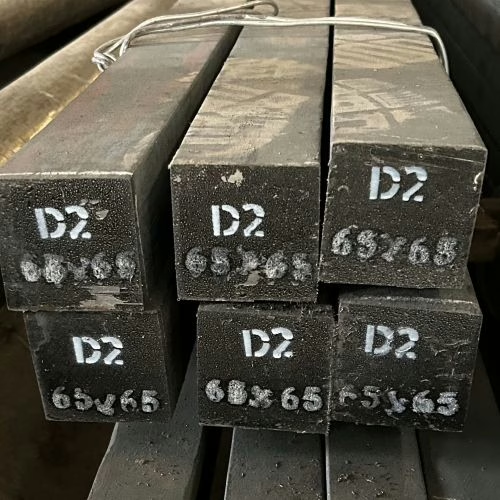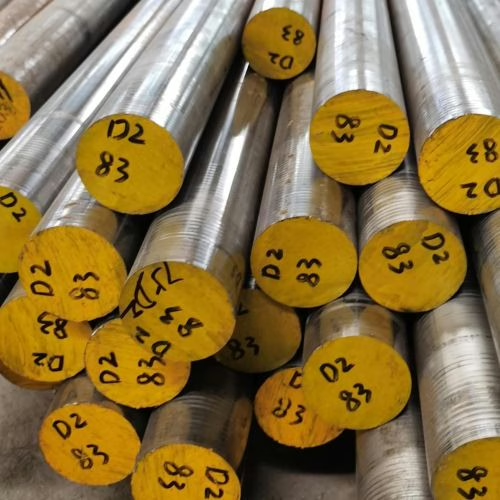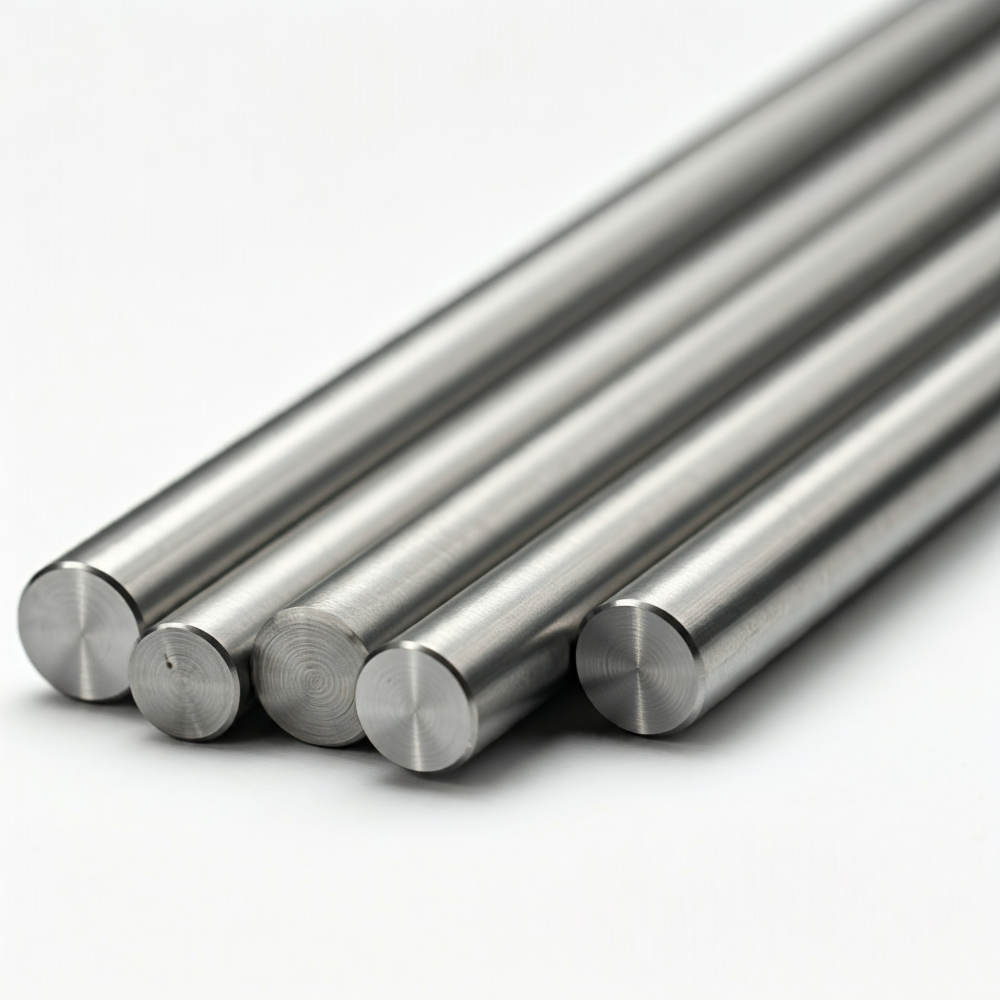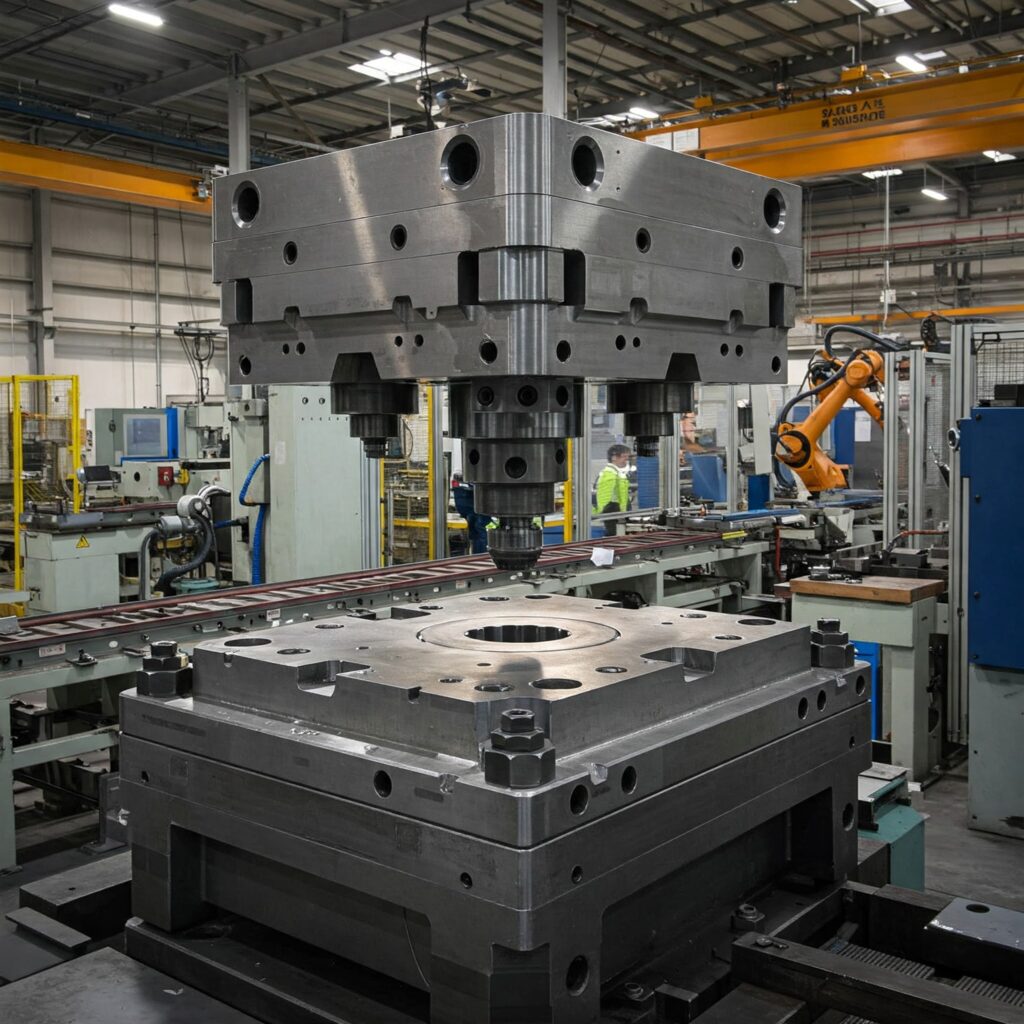Estimated reading time: 8 minutes
Key Takeaways
- D2 tool steel is recognized for its wear resistance and requires proper heat treatment for optimal performance.
- The heat treatment involves preheating, austenitizing, quenching, and tempering, each necessitating precise control of time and temperature.
- Common issues like low hardness, distortion, and quench cracking arise from improper heat treatment, but can be addressed with best practices.
- For effective troubleshooting, maintain uniform heating and control cooling rates during treatment.
- Understanding these practices helps extend tool life and enhances the properties of D2 steel.
Table of contents
D2 tool steel is a high-carbon, high-chromium air-hardening steel characterized by exceptional wear resistance, excellent dimensional stability during quenching, and high resistance to softening.
Despite its challenging machinability and weldability because of its high alloy content, this steel grade remains widely used in long-life molds, punching dies, and cold-forming dies. Heat treatment is critical for D2 steel, as it transforms its microstructure to achieve the required high hardness, wear resistance, and toughness. Similarly, troubleshooting for D2 tool steel is also important. If heat treatment is improperly performed, D2 steel will fail to attain the necessary hardness and wear resistance, rendering it unsuitable for demanding applications. For example, D2 frequently retains a significant amount of austenite after initial quenching, which can lead to brittleness and dimensional instability. Therefore, double or triple tempering is essential to convert this retained austenite into a stable, more rigid martensitic structure and to relieve internal stresses, thereby extending tool life and ensuring optimal performance. Preheat cycles are also crucial for preventing thermal shock and minimizing distortion.
This article provides a comprehensive “recipe” for successfully heat treating D2 tool steel, including best practices for each step, quality control measures, and effective troubleshooting techniques for common problems such as distortion, cracking, and issues with hardness or microstructure. By understanding and adhering to these guidelines, you can significantly lengthen tool life and optimize performance.
Heat-treating D2 steel typically involves three basic steps: heating (austenitization), rapid cooling (quenching), and reheating to a lower temperature (tempering). At each stage, precise control of time and temperature is crucial for achieving the desired D2 steel properties and microstructure.
Specific Heat Treatment Steps for D2 Tool Steel
1. Preparation and Preheating
D2 steel must be degreased before heat treatment to prevent discoloration caused by oils on the steel surface.1 Placing D2 steel in a controlled neutral atmosphere, vacuum, or neutral salt furnace environment and wrapping it in stainless steel foil can prevent decarburization during heat treatment. This preparation is especially important for smaller pieces of D2 steel.
After applying surface protection, preheating (unhardened) must be performed on D2 steel before formal heat treatment, especially when a high volume of material (more than 30-50% of the initial block) has been removed. The purpose of preheating is to reduce the risk of deformation and cracking during subsequent heat treatment.
The steps for preheating are as follows: Slowly and evenly heat D2 steel to 1200–1250°F (649–677°C). Soak at this temperature for 1–2 hours per inch (25.4 mm) of thickness. Then, slowly cool to room temperature in the furnace.
It is best to start heating D2 steel from a cold furnace, as this allows for a slower, more uniform heating process. If the furnace has already been heated to the preheating temperature, we recommend placing the D2 material on top of the furnace to preheat it, thereby eliminating cold shrinkage and reducing thermal shock, which minimizes cracking.
2. Austenitizing (Hardening)
This is the second step in the heat treatment operation. Austenitizing transforms the ferrite-pearlite structure into austenite and dissolves a large portion of the carbides. D2 steel depends on the dissolution of various complex alloy carbides during austenitizing to develop its properties.
The temperature range for this step is 980–1025°C (1796–1877°F), and the soak time is typically 45-60 minutes per inch (1.8-2.4 minutes/mm) of thickness. For items under 1 inch (25.4 mm) thick, a minimum soaking time of 45-60 minutes is recommended. Over-soaking or over-heating can destroy the molecular structure and cause brittleness, while under-soaking leads to insufficient hardness.
3. Quenching
After soaking, the steel is rapidly cooled to a temperature below the transformation temperature, resulting in a hard martensitic structure. Quenching is the third step.
D2 is an air-hardening tool steel, and air quenching is the preferred method for quenching this type of steel. Air quenching can significantly reduce deformation and dimensional changes. However, for very large cross-sections, air cooling alone may not achieve full hardness; in such cases, oil quenching or agitated salt baths may be considered to ensure proper transformation.
If air cooling is selected, remove the D2 workpiece from the furnace and allow it to cool naturally to approximately 150°F (66°C). It is essential to keep the part sealed in its foil envelope until all visible red heat is gone to prevent contact with the atmosphere.
If straightening is required, it must be performed at a temperature above 400°F (205°C).
4. Cryogenic Treatment (Optional but Recommended)
Tempering is a critical heat treatment step following quenching, aimed at reducing brittleness, transforming retained austenite, and forming carbides in the martensite, thereby optimizing the properties of D2 steel.
Typical tempering temperatures for D2 are around 515°C (960°F) for the first temper and 480°C (900°F) for the second. If using multiple tempers, each subsequent temper should be performed at a slightly lower temperature (e.g., 14°C or 25°F lower) than the previous one to retain the original hardness level. Each tempering cycle requires a soak time of 2 hours per inch (25mm) of cross-section. It is critical not to undertemper parts. Always allow the part to cool to room temperature between tempering cycles to minimize retained austenite.
5. Tempering
Tempering (or drawing) is a thermal treatment applied to hardened steels to enhance toughness and ductility, relieve internal stresses, and achieve the desired mechanical properties. It transforms as-quenched martensite into tempered martensite. As-quenched martensite is very hard but also brittle, and without tempering, it is highly susceptible to cracking. Tempering also refines the grain structure.
Tempering must be carried out immediately after quenching, as soon as the parts reach a temperature of 125-150°F (52-65°C).
We recommend double tempering for D2, or even triple tempering, to improve wear resistance and stress relief. The temperature for the first tempering is 960°F (515°C), with a soaking time of 2 hours per inch (25mm) of cross-section. The second tempering must wait until the temperature has dropped to room temperature after the first tempering. Secondary tempering at 900°F (480°C), with soaking for 2 hours per inch of the cross-section.
Although a single tempering at 400°F (205°C) can achieve 62 HRC, we recommend double tempering at 900°F to improve wear resistance and eliminate stress.
For hardened D2 steel material, after significant grinding, welding, or electrical discharge machining (EDM), we also recommend tempering for stress relief. This is performed at a temperature of 25-50°F (14-28°C) lower than the previous tempering temperature. 2
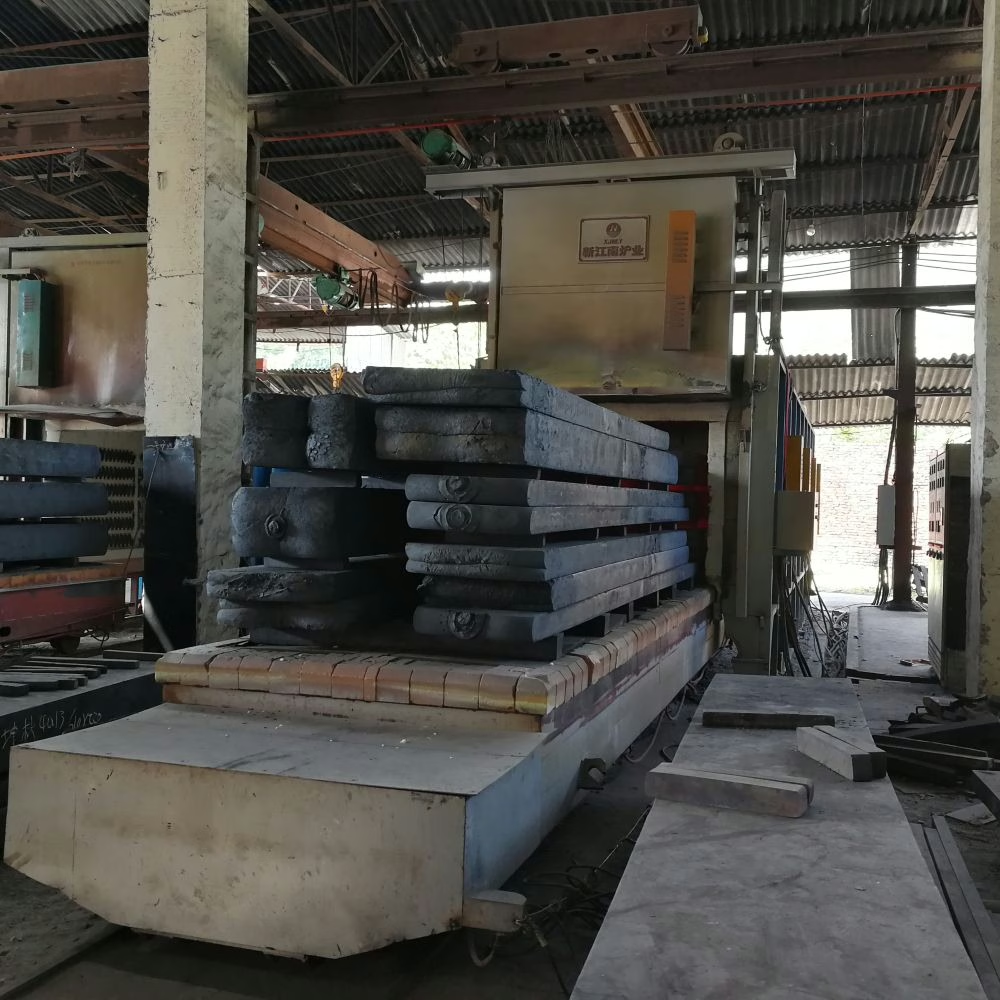
Troubleshooting Common D2 Heat Treatment Problems
1. Low Hardness or Strength
This may be due to insufficient austenitizing temperature or inadequate holding time (“underheating”), resulting in incomplete martensitic transformation.
It is recommended to adjust the austenitizing temperature and ensure sufficient holding time, or implement multiple tempering cycles, and consider cryogenic treatment to address residual austenite issues.
2. Distortion and Warping
Residual stresses generated during machining or forging operations on D2 steel are the primary cause. However, it is also possible that insufficient uniformity of heating the D2 workpiece during heat treatment contributed to the issue.
The solution involves implementing stress relief treatment after rough machining and before hardening, along with ensuring uniform heating of D2 components during heat treatment. Uniform heating can be assessed by observing whether the color of the furnace wall matches that of the workpiece. When the furnace wall and workpiece exhibit consistent color, it indicates that the D2 component has been heated uniformly.
3. Quench Cracking
Excessively rapid cooling or uneven cooling may cause cracking, so the cooling rate must be controlled. Stress relief before air quenching can also reduce the risk of cracking.
4. Overheating and Burning
Excessive austenitizing temperature or prolonged soaking beyond recommended times can lead to overheating and even burning of the steel. This destroys or burns the molecular structure, causing brittleness and grain coarsening.
Strictly adhere to the recommended austenitizing temperature and holding time.
5. Decarburization and Oxidation
Heating steels to high temperatures, without proper atmosphere control, can lead to oxidation (scaling) and decarburization (loss of carbon from the surface). Decarburization reduces surface hardness and wear resistance.
Using salt bath furnaces or controlled atmosphere furnaces can prevent or minimize these issues. Alternatively, wrapping D2 workpieces in stainless steel foil can reduce the likelihood of decarburization.
6. Excessive Retained Austenite
High austenitizing temperatures, rapid cooling rates, and specific alloying elements can result in significant amounts of retained austenite after quenching. This can lead to dimensional instability, as retained austenite can spontaneously transform into untempered martensite in service.
Multiple tempering treatments can transform retained austenite and temper newly formed martensite. Cooling to room temperature between tempering cycles is also critical for minimizing retained austenite.
Summary
In summary, the above is a standard heat treatment scheme for D2 steel. Several details should be considered in this process, including uneven heating, which can lead to deformation or cracking. Overheating or over-soaking during austenitizing can lead to excessive grain growth, making the steel brittle. For the results of D2 steel heat treatment, D2 steel hardness measurement alone is insufficient to confirm whether the heat treatment is appropriate. Other performance indicators, such as strength, toughness, wear resistance, and microstructural characteristics, better reflect the quality.
- ASM International. (1991). ASM Handbook, Volume 4: Heat Treating. ASM International. ↩︎
- Leed, R. M. (2007). Tool and Die Making Troubleshooter. Society of Manufacturing Engineers (SME). ↩︎
